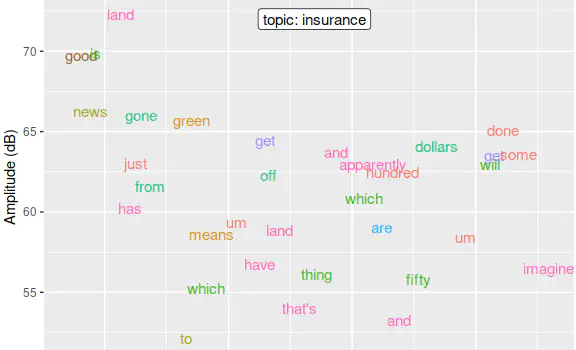Topical structure, amplitude variation, and F1 in single-speaker narrative recordings

Abstract
Research on speaker style and stance encourages the move from single linguistic variables towards systems of covarying variables and their within-speaker variation (e.g. Podesva 2008; Eckert 2012; Eckert & Labov 2017). We here report a surprising finding made while exploring within-speaker stylistic covariation of vowel formants. Namely, that vowel formants strongly covary in response to fluctuations in speaker amplitude. We argue that this effect is of concern to any sociolinguist extracting vowel formants from speaker recordings. We also find potentially agentive use of amplitude variation to signal the beginning and end of topics within single-speaker narrative recordings. Our data comes from the QuakeBox corpus (Clark et al. 2016), a collection of transcribed and force-aligned single-speaker recordings of stories about the 2010-2011 Christchurch earthquakes stored in a LaBB-CAT instance (Fromont & Hay 2008). QuakeBox recordings occurred in a quiet mobile recording studio environment. We divide speaker recordings into 60 and 240 second intervals within which we take the mean F1 and F2 values for ten New Zealand English monophthongs. Application of PCA then reveals strong covariation of F1 values for all monophthongs (cf. Brand et al. 2021). We connect this effect with amplitude by including it within the PCA analysis and by means of GAMM modelling. While previous research has connected amplitude and vowel formants, especially in the context of speech in noisy environments and of vocal effort (e.g. Van Summers et al. 1988, Liénard & Benedetto 1999, Koenig & Fuchs 2019), we are unaware of studies concerning normal variation in amplitude in a quiet recording environment. We argue that the magnitude of the amplitude effect should be taken seriously by sociolinguists on two grounds. First, the extraction of vowel formants is a core tool in sociolinguistic research. However, relative changes in amplitude have a significant effect on the nature of the vowel space as a whole. We demonstrate this by means of an R Shiny interactive, allowing investigation of high and low amplitude vowel spaces in the QuakeBox corpus, and by comparing the effect of amplitude with the often-controlled-for effect of speech rate on formants. Second, we argue that amplitude variation may be being used agentively by speakers to signal the beginning and end of topical subsections of their narratives. Amplitude variation may thus be an important part of the emerging literature on the role of phonetics in discourse structure and turn taking (e.g. Local 2007, Zellers & Post 2012). Co-authors: Jen Hay, Lynn Clark, James Brand.